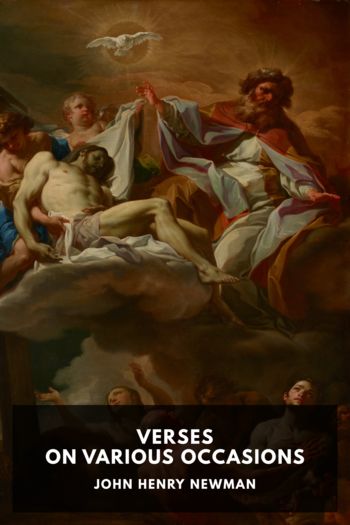The Half That You See Rebecca Rowland (smart books to read txt) 📖

- Author: Rebecca Rowland
Book online «The Half That You See Rebecca Rowland (smart books to read txt) 📖». Author Rebecca Rowland
This startling piece of information elicited from me the rather inane remark, “Leak? What leak?” His answer to this was that he had begun hearing a leak in one of the sinks in one of the half baths or powder rooms but had been unable to locate it. And yes, he’d put Dmitry on the case, and he’d not found the source of the sound either, partly because Dmitry claimed not to hear it himself; another sign of his somewhat dimwittedness, Martin believed.
Not a moment after this conversation, the un-heeding Dmitry appeared at the breakfast table to say that we had visitors. Might he let them in? We had finished breakfast, and in sailed Wilhelmina Sheriff and an elderly gentleman who was clearly some cleric or other. They sat themselves down at our welcoming table and helped themselves to what was left of the coffee and Mrs. Grack’s excellent scones, chattering all the while.
The gist of their talk was that the church held twice a year fairs of local produce, flowers, goods and locally made crafts, and the village looked forward to it greatly, as did the neighboring villages in the shire. “St. Botolph’s Day Fair is a crucial event for our village people and it is in the greatest danger at this time,” the aged Parson said, with feeling.
I was waiting for them to hit us up for a donation, and I could all but see Martin calculating what he could give. But Wilhelmina clarified: “It’s the grounds, you see. The church and its manor house both have questionable drainage. I’m sure you haven’t failed to notice a large round barreled lorry outside it, as workmen come and go clearing it up.”
“A tedious process,” the parson added. “We don’t know how long they’ll be there.”
In fact, we had noticed the truck only the day before during our afternoon walk. Before we could say another word, the cleric spoke up again, “Historically, Cranburgh Grange provided the grounds for the bi-annual fair until quite recently. It was always held here, on the front and south facing lawn. There are sepia-graphs of the event. It was, after all, the grandest house in the shire.” Wilhelmina merely nodded and downed more scone and preserves. Before I could ask, “Cranburgh? Not Cranberry?” The parson explained that the fair had been moved to the church grounds only in the past few years, once the mansion’s heirs declared the property out of bounds. He assured us that if we allowed it, the fair would all be set up, operated and managed, and then taken apart again by his staff and volunteers. Afterwards, one would never even notice it had been here. All we need do is step out at any time during the fair, receive some refreshment, and be thanked for our largesse.
That sounded completely reasonable to Martin, and as I had no rational opposition, the motion was carried then and there. Only as they were leaving did I say to Wilhemina, “Cranburgh?” to which the parson replied, “Yes, of course, named after Lord and Lady Cranburgh. It was the builder’s second wife who began the St. Botolph’s Day event in her lifetime: Lady Sofia Cranburgh.” Then they were gone.
We were to hear a great deal more of this one-time paragon of the shire. Once it became generally known in the village that we’d agreed to open the grounds of the Grange (we continued to call it “Cranberry” among ourselves) for the fair, as in years past, it seemed that we had suddenly gained status, and more importantly, new friends. Sam Westin, the fellow who ran the post office and general office and stationers next to Ms. Sheriff’s office, greeted us like long lost cousins as we took our daily walk. “You know, of course, that the Grange has its own post box within,” he assured us, all but twinkling with amity as he handed us the keys. “At no charge, naturally.” He then foisted some leaflets or other apparently from previous decades upon us, and assured us that his eldest daughter Elspeth’s hand-embroidered aprons and napery were the star crafts of past fairs.
Not to be outdone, Mrs. Anthony Page, the owner of the little bakery across the lane, sent out a boy to fetch us in and plied us with strawberry jam oat cakes she’d just taken out of the oven. “T’was Lady Sofia Cranburgh who first appreciated us common folk for our arts and crafts a century nigh, as every one of us knows,” she said. “Why, I’ll be baking for a day and half beforehand, and even so I’ll be out of goodies by mid-afternoon.”
The more we heard, the more we became interested in this first and longest in-residence woman of what we’d already come to think of as our house. A few days later, I had the opportunity to learn even more. Martin still had business he must attend to and when phones and faxes and e-mails were not enough, he had to go into London himself. I drove him to the station of the narrow-gauge rail extension at what might be considered the main town of the shire, a local line that connected up to an express line. While there, I noticed a lending library and stepped in and expressed an interest in the house. What I was able to scan and then borrow after some paperwork, was a sort of homegrown history of the shire for the past half millennium by an enthusiastic amateur, with Lady Sofia Cranburgh prominent in the 19th Century chapter. Her virtues were apparently so many, so widespread, and so—after a while—unctuously narrated, that I simply took the thing out for a small fee, intending Martin





Comments (0)